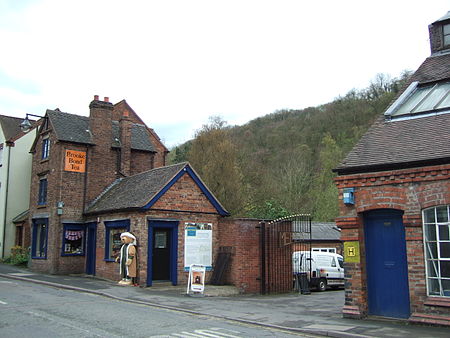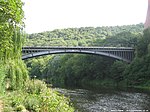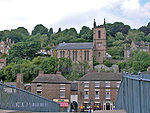Merrythought

Merrythought is a toy manufacturing company established in 1930 in the United Kingdom. The company specialises in soft toys, especially teddy bears. Merrythought has handmade traditional teddy bears in the World Heritage Site of Ironbridge, Shropshire, UK since 1930. The company's site in Ironbridge has a small museum and shop open to the public, and is where the toys are made. The site is a former iron foundry building on the banks of the River Severn, less than half a mile (0.7 km) upstream from the world-famous Iron Bridge itself. The vicinity is known as Dale End, lying at the bottom of the Coalbrookdale valley, and falls within the wider Ironbridge Gorge World Heritage Site. The origin of the firm's name is uncertain but possibly derives from an archaic word for "wishbone" – the company has used a wishbone as an emblem from 1930.
Excerpt from the Wikipedia article Merrythought (License: CC BY-SA 3.0, Authors, Images).Merrythought
The Wharfage,
Geographical coordinates (GPS) Address Nearby Places Show on map
Geographical coordinates (GPS)
| Latitude | Longitude |
|---|---|
| N 52.63 ° | E -2.494 ° |
Address
The Wharfage
TF8 7NJ , The Gorge
England, United Kingdom
Open on Google Maps










